How to Create Lead Generation Landing Pages (10 Steps)
To maximise conversions on landing pages, you need to understand why your prospects are coming to your site in the first place.
There is no question that landing pages are an essential part of every marketing funnel. However, many small business owners have found that they lack the knowledge or expertise to create good landing page content that converts visitors into leads and sales.
That's where we come in. In this guide, we'll walk through the simple steps for creating lead generation landing pages using any page builder.
If you want to increase conversions from your lead generation landing pages, it helps if you know what is most effective in design, structure, and copywriting.
Table of Contents
1 – Identify Your Audience
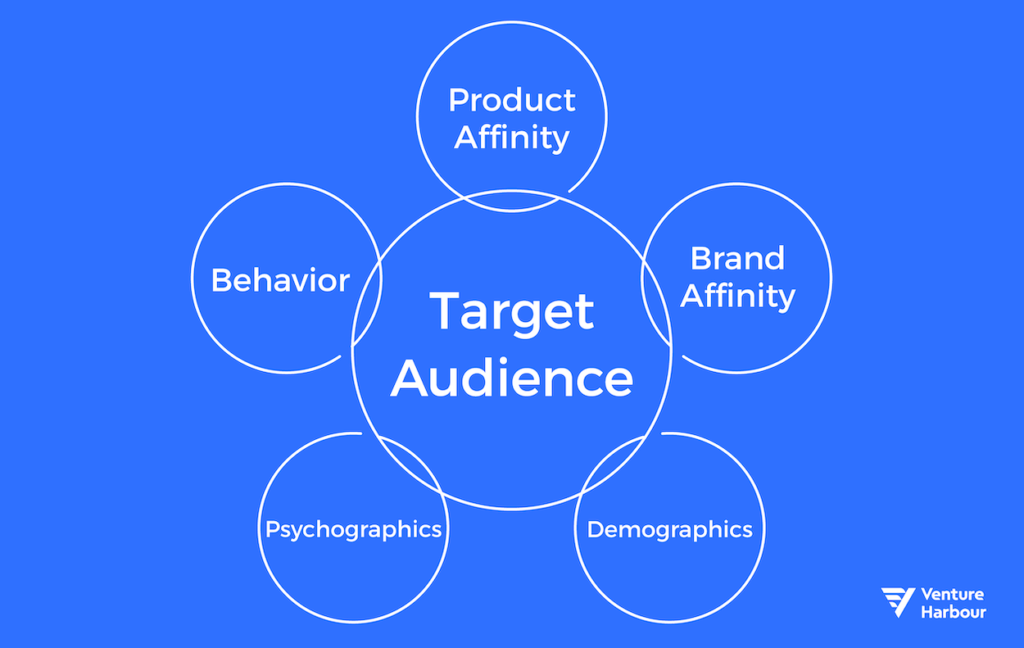
So now you know what are lead gen landing pages and how they work. But, do you know whom you should target with your landing page?
The best way to get the correct lead gen landing page for your business is to figure out what your target audience wants. A good lead gen landing page should be able to attract an audience who is ready to buy.
How do you figure out what your audience wants? There are a few ways to do that. Some of the methods to do that is:
1 – Research
You should start by researching your product. What products are being bought by people in the market? Where do people usually go to buy them? Which companies are the leaders in your industry?
This research can help you identify your ideal customer. It can help you figure out whom your competitors are targeting and if your product is worth the money you spend.
2 – Questionnaires
Surveys can help you figure out what your audience needs. They are effective because you can talk directly to your customers. It can help you figure out what kind of problems they are facing. These problems can help you develop a solution to the problem.
When it comes to surveys, there are many types of questionnaires. You can use questionnaires to identify the following:
- Demographics
- Attitudes
- Interests
- Behaviour
- Needs
Here are some examples of the questionnaires.
Demographics:
This questionnaire helps you figure out what type of people you are targeting.
Attitudes:
This survey can help you find out the answers to questions like:
- Who would buy your product?
- Why do people buy?
- How much do people want to pay for your product?
Interests:
This survey can help you find out what interests people.
Behaviour:
This questionnaire can help determine how people react when they have a problem.
Needs:
This questionnaire can help determine what people need to solve their problems.
The best thing about questionnaires is that they can give you much information in just one question. Also, they are cheap and easy to conduct.
3 – Focus groups
Focus groups can help you figure out whom you are targeting. It can help you figure out what your ideal customer looks like. It is helpful because you can ask people about the products that you are offering.
You will typically have about 20-50 people in a focus group. Each person will have a specific role. They will discuss the product with you and also try the product out. This can help you figure out what features people want.
4 – Surveys
Surveys can help you figure out who your audience is. They are great because they give you a direct answer to a question. You can also use surveys to find out more about your ideal customer.
This questionnaire can help you figure out things like:
- Who would buy your product?
- Why do people buy?
- How much do people want to pay for your product?
Asking questions through surveys can help you find out who your audience is. It can also help you figure out what they want and how they want it.
5 – Customer interviews
Customer interviews can help you figure out who your audience is. They can be done via phone, email, or in person.
Some of the questions you can ask include:
- What do you think about our product?
- Do you want to buy our product?
- What does our product do for you?
You can also ask what would make people buy it?
You can also conduct customer interviews to figure out what your audience wants. This can help you develop the landing page for your product.
6 – Customer research
Customer research can help you figure out who your audience is. You can conduct customer research through focus groups, surveys, and interviews.
You can also do customer research by asking your customers what they think. This can help you figure out whom you are targeting.
You can also get your customers to create landing pages for you. Then, you can study them to figure out who your audience is.
7 – Testimonials
Testimonials can help you figure out who your audience is. You can conduct a survey or an interview to get testimonials.
You can also ask your customers for testimonials. It can help you figure out who your audience is.
Here are some examples of what your testimonials can look like:
- My experience with your product was excellent.
- I love the product.
- This is the best product I have ever used.
8 – Word of mouth
Word of mouth can help you figure out who your audience is. If you have friends and family members, they can tell you whom you are targeting. You can also find out how people like your product.
A friend or a relative can tell you about the product they are using. This can help you figure out who your audience is.
9 – Content analysis
Content analysis can help you figure out who your audience is. It is a type of data mining.
It helps you analyse the content that you have written on your website. This will help you figure out whom you are targeting.
10 – Social media
You can also find out your audience by looking at social media. You can look at the social media accounts of your target audience.
It can help you find out who your audience is. It can also help you determine what products they buy and why.
2 – Write Your Headline
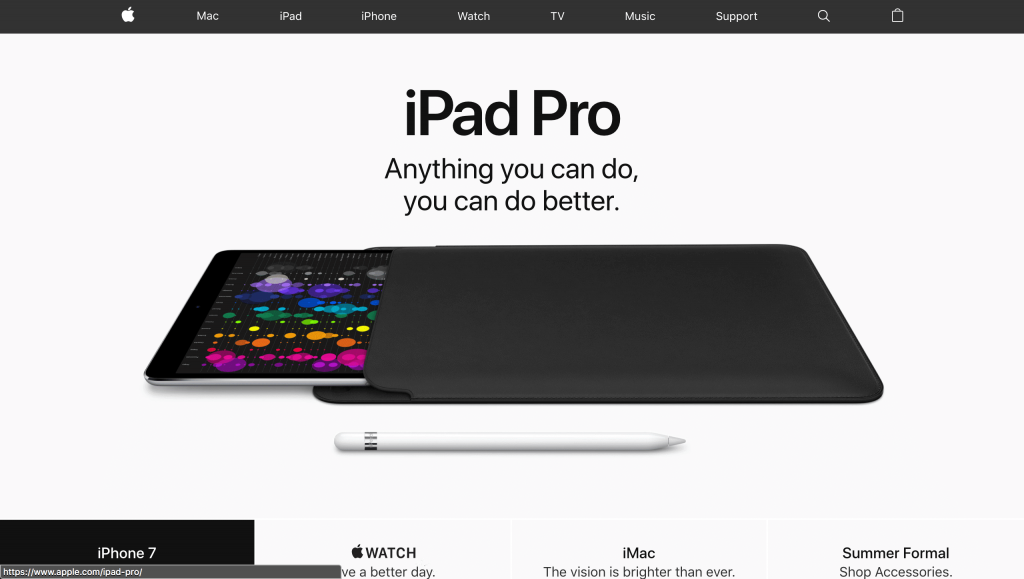
The title is one of the essential elements of a web page. A good headline attracts visitors to a web page and converts visitors into leads and sales. It also helps you rank higher in search engines. To create a great landing page, you must pay close attention to the headline.
It's a vital part of any landing page; you must write it correctly to succeed.
So, how do you write a catchy headline? The most important thing is ensuring that the headline immediately grabs your readers' attention. You should keep in mind the following points when writing the headline:
1 – Use strong verbs
Try to use a simple sentence and make it easy to read by using strong verbs and avoiding passive verbs. For instance, instead of writing “Create a landing page”, try “Create a Lead Capture Page”. This will sound much better and easier to read.
2 – Include your company name
It's a good idea to include your company name in the headline. It shows that you're affiliated with the company. However, if the reader doesn't know who you are, they may not be interested in your service.
3 – Write a headline that has at least five words
Most people scan a webpage to see if there are any keywords on the page. You won't get any traffic if you don't have any keywords. Make sure that the headline contains at least five words.
4 – Make it unique
The headline is the first thing visitors see when they land on your page. Make sure it grabs their attention and makes them want to read your page. A unique headline will do this.
5 – Be relevant
The headline should be relevant to what the page is offering. If you're not sure what the page offers, ask yourself, “What will the visitor be able to do after reading my page?”
6 – Include a call to action
The main goal of any page is to generate a sale. Therefore, the headline should include a call to action. You can offer a free trial, sign up for a demo, or give a discount. If you want to encourage visitors to subscribe, you can say that your landing page will send them a weekly newsletter.
7 – Avoid negative headlines
Using a negative headline is not a good idea because it will put off potential customers. If you want to attract visitors, use a positive headline.
8 – Make it creative
You can use a creative headline to grab the attention of your visitors. If you're not sure what kind of headline you should write, try brainstorming with your colleagues.
Headlines are crucial. You need to pay close attention to the way you write your headline. These tips will help you create a unique and compelling headline for your landing page.
3 – Build the Body of Your Page

The body of your page is the first thing that comes into the mind of users when they land on your landing page. It is one of the most critical factors determining how many people will engage with your landing page. The body of your page should be carefully crafted. The purpose of the body is to persuade users to act.
Three main factors determine if a visitor will engage with a landing page:
- Credibility
- Interest
- Emotional Connection
Credibility is the level of trustworthiness that a person feels about you or your product. Interest is the level of curiosity that a person feels towards you or your product. Emotional connection is the level of empathy that a person feels towards you or your product.
To build credibility, you must provide them with a clear, robust, compelling reason to trust you.
Here are some ways you can increase the credibility of your landing page:
- Use a reputable domain name.
- Ensure the landing page has a strong and clean URL.
- Provide a link to your website or blog on the landing page.
- Add social proof that proves your credibility.
- Include testimonials from genuine customers.
- Include case studies.
- Provide the information that your visitors are looking for.
- Create a persuasive call to action.
- Use compelling graphics, video and audio content.
- Promote a free trial.
- Include a clear benefit statement.
Interest is the level of curiosity that a person feels towards you or your product. You need to create a sense of urgency to get a user interested. You can provide them with a solid and compelling reason to act now.
Here are some ways you can increase the interest in your landing page:
- Include a free gift.
- Promote a discount.
- Offer a contest.
- Use a time-limited offer.
- Create an opt-in form.
- Create a compelling headline.
Emotional connection is the level of empathy that a person feels towards you or your product. When visitors see something that makes them feel warm and fuzzy, they become more likely to engage with your landing page.
Here are some ways you can increase the emotional connection of your landing page:
- Make the landing page visually appealing.
- Use eye-catching graphics, colours and fonts.
- Include a sense of humour.
- Use storytelling techniques.
- Make the page interactive.
- Include relevant links and buttons.
- Include videos and images.
- Create a sense of urgency.
- Use a persuasive call to action.
- Use social proof.
- Use case studies.
- Include testimonials.
- Promote a free trial.
- Include a clear benefit statement.
Your landing page should generate a good amount of leads for your business. If your landing page does not achieve that, then it is worth it to hire a professional landing page designer to create it for you.
The body of your page is one of the most critical factors determining whether your landing page converts.
4 – Include Lead Magnets
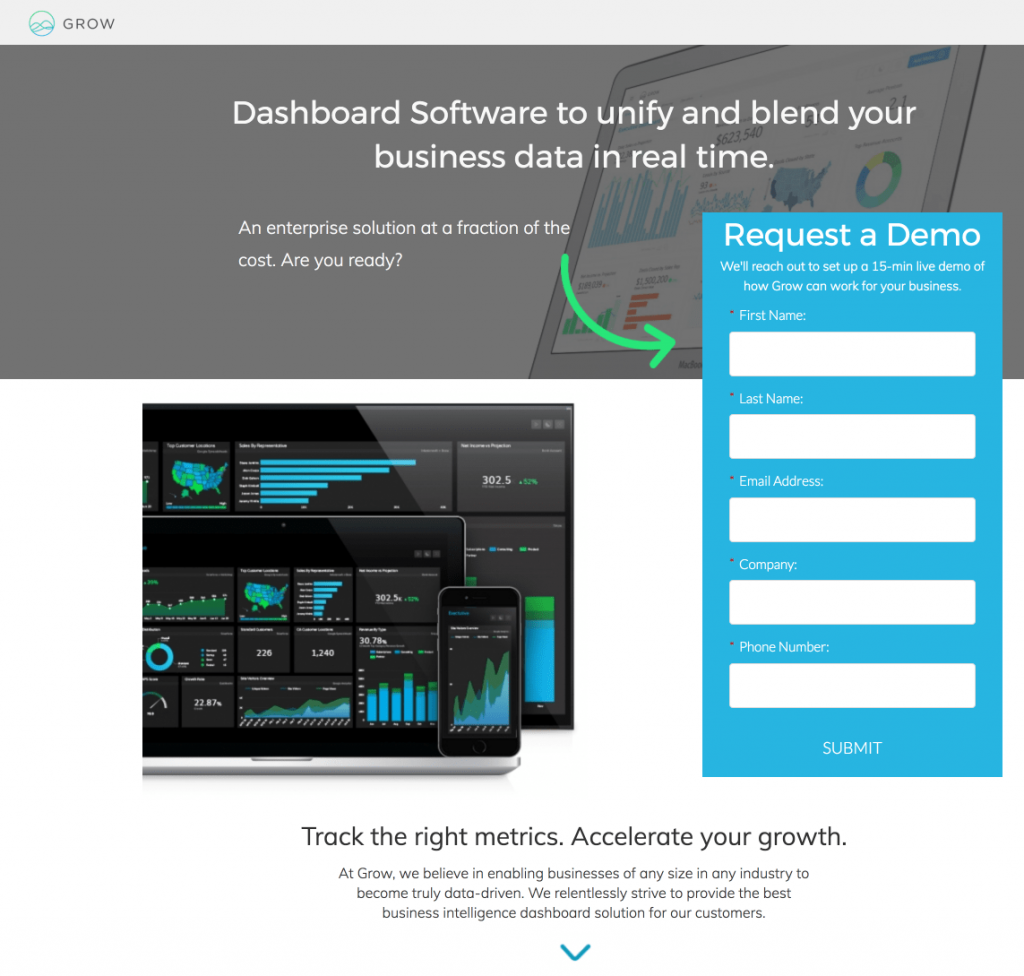
Lead Magnets communicate with the potential customer. It is usually a downloadable file, such as an eBook, white paper, guide or report.
How does it work?
A Lead Magnet is designed to capture the potential customer's interest. They usually ask for information such as name, email address, interests etc. Once the potential customer provides this information, you can contact them via email, phone, or another communication method.
The Lead Magnets are then used to communicate with the potential customers. They are usually sent out with a message inviting the potential customer to download the lead magnet. When they click on the link, they are presented with a form asking them to provide further information. They can then continue on their journey through the sales funnel.
How do I decide which Lead Magnets are best for my lead generation campaigns?
You need to decide what type of Lead Magnet you would like to use for your lead generation campaigns. You can use them in a variety of ways. For example, you can use them to get new leads to sign up for your newsletter, register for a webinar or get more information about the service or product you offer.
You need to consider what you want to do with the leads you acquire. If you just want to collect a list of names and contact details, you can use a Lead Magnet. However, to start a conversation with the potential customer, you may need a different Lead Magnet.
What Lead Magnets do you recommend?
There are several Lead Magnets to choose from. They are designed to do different things for you.
The first step in selecting the right Lead Magnet is to decide what you want to achieve. If you are looking just to gather leads and not build a relationship with the potential customers, you can select the following Lead Magnets:
- Downloadable eBooks
- White papers
- Guides
- Reports
- Templates
- Demos
- Samples
- Checklists
If you want to build a relationship with the potential customer, you can select the following Lead Magnets:
- Case Studies
- Webinars
- Quotes
- Surveys
- Questionnaires
- Video demonstrations
- Interviews
- Presentations
5 – Design Your Page with Credibility in Mind

A well-designed lead generation landing page is crucial to any marketing campaign. Without it, no matter how fantastic your product or service is, it won't get you anywhere.
A successful landing page is credible and compelling enough to convince visitors to opt-in. So here are four simple things you need to do to make your landing page stand out among the crowd.
1 – Create a brand that is believable and recognisable
Your landing page has to convey a feeling that your company or brand is credible and trustworthy. If you're pitching a service, you'll want to give off the sense that your company is trustworthy and experienced. If you're selling a product, you'll want to convey that your product is reliable and of high quality.
To create this feeling, you must ensure that your landing page has a solid visual identity throughout the site. The colours and fonts should be consistent across your company's products and services. This will give the impression that your company knows what it's doing and that you're confident in your abilities.
2 – Make sure your landing page is easy to navigate
The first thing visitors notice about your landing page is the layout. Make sure that the navigation is straightforward to navigate. Visitors should easily find what they want to know. The navigation links should always be visible. And if they aren't, ensure that there's a way to access them directly through the site.
3 – Make sure your copy is clear and concise
Your landing page should have a clear and concise message. You should also write your copy in a conversational tone. Avoid being too formal or wordy.
4 – Test your landing page thoroughly
The most important step is testing no matter what type of landing page you're creating. You must test your landing page thoroughly to ensure it is getting the expected results. You don't want to waste time and resources designing a landing page that doesn't perform.
Once you've got the basics down, you can start experimenting. Try different layouts, different colour schemes, different fonts and different copies. The more you test, the more ideas you'll come up with. Once you have some great landing pages, you can share them with your team and let them try them out. Then, you'll have a much better idea of which ones work best for your brand.
When designing your landing page, remember that it needs to be credible and convincing. It's your chance to build trust with your potential customers.
6 – Include a Call To Action that Encourages Customers to Sign Up

You may have to create multiple landing pages that have different CTA's. Each landing page has its target audience and its own goal. If your landing pages are the same, they may not convert well. To make the pages more appealing to their target audiences, you must add some unique elements to the landing pages.
Here are a few ways you can use to include a call to action on your landing pages.
1 – Include the same CTA but add a different button to the page
A great way to increase conversions is to add the same CTA to multiple pages. However, add a different button to each landing page. For example, you can add the CTA with the option to get the free eBook. But, you can also add an opt-in form to collect emails for your list.
2 – Add a unique element to the landing page
Another way to make your landing pages more effective is to add a unique element to each landing page. For example, you can add a map on the page, a countdown timer, a video, or even an animated gif. You can use the CTA and the call to action as well.
3 – Use a different CTA for each landing page
Yet another way to make your landing pages more effective is to use a different call to action button on each page. For example, you can have a link that says, “Submit your contact information” and a link that says, “Get your free eBook”. If you do this, you may increase the conversion rate.
You've successfully created a unique landing page. Now you can monitor how many people click on the buttons and how many people subscribe to your mailing list.
7 – Use Email Capture Forms to Increase the Conversion Rate
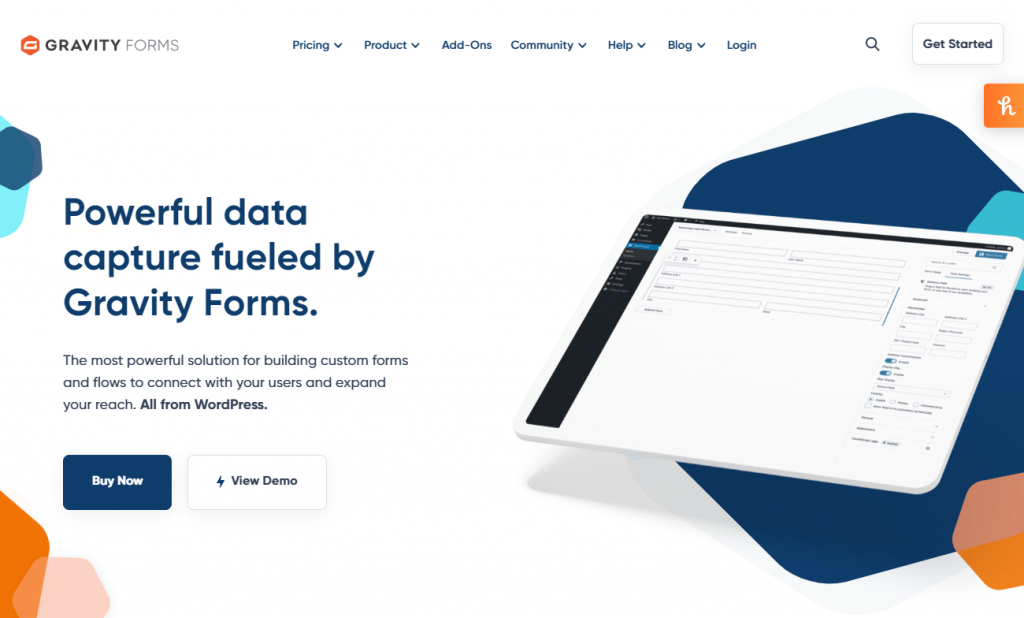
The landing page conversion rate is one of the critical things to measure the success of a website. In this article, we'll share a simple trick you can use to increase the conversion rate on landing pages.
Many businesses commonly use forms and forms that have been a standard part of eCommerce websites since they were first created. However, some issues are associated with forms, such as making it difficult to collect data, poorly designed, and requiring too much effort to fill out.
The good news is that many options are available to make forms easier to fill out. Here are some of the best options for forms:
Form Engine
Form Engine is a free and easy-to-use solution for creating forms. It helps you to create forms that look great, are simple to use, and don't require a lot of design work. It also gives you access to many form elements to build complex forms quickly and easily.
Form Stack
Form Stack is another powerful option for creating forms. It has all the features you need to create excellent forms for your users, including the ability to show multiple fields per line and various input types.
HTML Forms
HTML Forms is a powerful and easy-to-use tool that helps you create forms that are easy to fill out. Using HTML Forms, you can add callouts, custom CSS, and icons to the form.
FormFlow
FormFlow allows you to add live chat and forms on a single page. This means you can have a form and then show a chat window on top of it. This makes it easy for people to fill out the form but still have someone there to answer their questions.
Gravity Forms
Gravity Forms is a free, feature-rich, and easy-to-use form builder. With it, you can create complex forms that include advanced conditional logic, custom field types, unlimited fields, and even email notifications.
There are many options available for you to create forms. You can use the free and easy-to-use Form Engine, FormStack, or the HTML Form Builder.
However, if you want to go further, you can use the abovementioned tools. The ones I've mentioned above are my favourites, but other solutions are also available.
The key to converting landing pages is providing a great user experience.
8 – Leverage Facebook Ads to Generate Leads
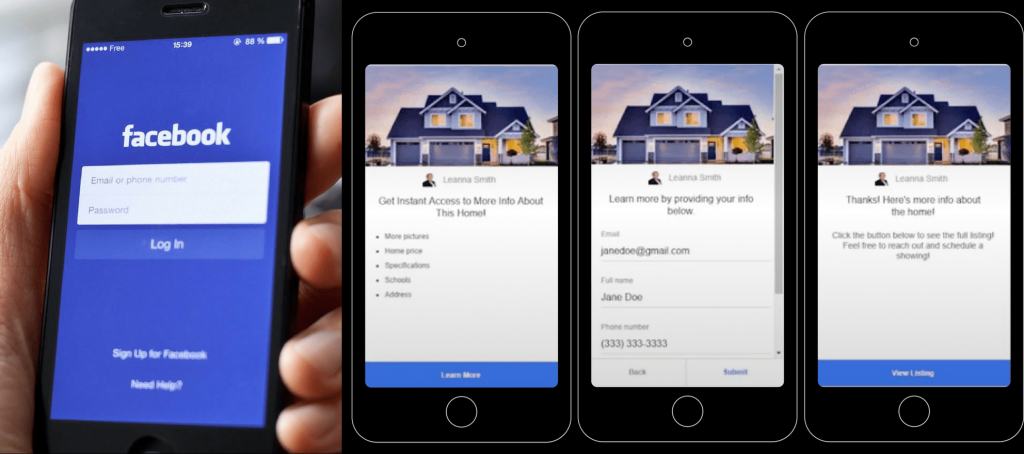
Facebook ads are an excellent way to promote your landing page, website or product. They are very effective and affordable for both small businesses and big businesses.
But how do you know how to use Facebook ads effectively and get the best ROI?
Here are some great tips for leveraging Facebook ads for your business:
Tip 1: Choose a target audience that is interested in your product
Facebook ads are targeted based on the users' interests, so you can't make good decisions if you don't know who your audience is. You should first identify who your target audience is. You can use Facebook Insights to see who your audience is. For example, if your audience is people between the ages of 25 and 35, then you can select this audience.
Tip 2: Target people who have recently visited your website
By targeting people who have visited your website within the last seven days, you can create a targeted audience likely to buy your product.
Tip 3: Add relevant calls to action
There are three types of calls to action (CTAs) available in Facebook ads:
“Install Now” is the default call to action that appears when a user clicks on your ad.
“Install Later”: This CTA has a delay before it appears. When you click on it, it will appear after a few minutes. This is useful if you have a landing page that requires registration or a certain amount of information.
“Add to Cart” is another CTA that adds products to the cart.
Tip 4: Make sure your ad is converting
Facebook ads are beneficial because they are easy to create. Once you create a good ad, it will show up in your audience's feed, and they'll start seeing your ads. You can use the Ad Preview tool if you don't know how well your ad converts. It's a free feature that lets you preview your ad before paying for it.
You can also measure the performance of your ads using Facebook Insights. You can see things like:
- CTR: Click Through Rate – the ratio of people who click on your ad to those who see it
- CPC: Cost per Click – the cost of generating a click
- CPA: Cost per Acquisition – the average price you pay for every conversion
- Conversions: the number of conversions you get
You can now leverage Facebook ads to make a massive impact on your marketing strategy.
9 – Promote Your Lead Generation Landing Pages on Social Media
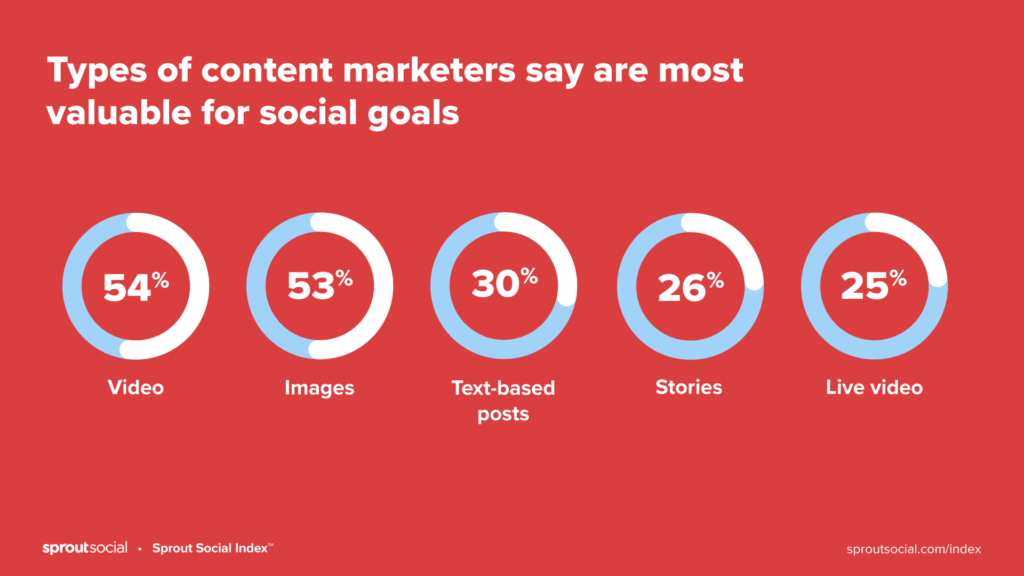
Regarding lead generation, landing pages are a great way to get in touch with potential clients. You can use landing pages for different purposes, including lead generation, sales, and customer service. With this in mind, you must optimise your lead generation landing pages for various social media platforms.
Facebook Ads
One of the most common ways to promote landing pages is through Facebook Ads. By promoting your landing pages on Facebook, you can target your audience and reach them directly. This is a cost-effective way to promote your lead generation landing pages, especially if you're not sure who your ideal client is.
If you have a small business or startup, then Facebook ads may not be the right choice. Facebook's advertising fees start at $3 per day and go up depending on the number of users. In addition to the cost, you must consider that not everyone uses Facebook. For instance, a company based in a developing country, India, may not have many active users. However, there are other social media platforms like Instagram, Twitter, and LinkedIn, where you can promote your landing pages.
LinkedIn has become an essential tool for people working in the business world. Therefore, it is an excellent platform for promoting your landing pages. You can use the “InMail” feature on LinkedIn to send customised messages to your target audience. This lets you know whom you are reaching out to and what they want. As a result, you can reach out to only those people who are interested in what you offer.
Twitter has become an enormous platform in recent years. Companies often use it to grow their business and create awareness about their products. Therefore, it makes sense to use Twitter to promote your landing pages. You can even use the Tweets from your followers to boost your page's reach.
Pinterest is another useful social media platform for lead generation. You can promote your landing pages on Pinterest by creating images with the information you want to share with your target audience. This helps drive traffic to your landing pages.
Now that you know how to promote your landing pages on different social media platforms, it's time to start using it. Remember, these are just a few of the many options that you have to promote your lead generation landing pages.
10 – Track and Monitor the Results

It's often said that tracking leads and conversions are one of the most critical aspects of marketing. Tracking the results from landing pages is a straightforward process.
Landing pages are designed to track their activity to give you a clear picture of how many visitors are reaching them. This helps you understand what is working and what isn't.
When you know what is working, you can improve your landing pages or even start building more pages.
You should be tracking mainly to show how many visitors are converting and what kind of traffic they are coming from. You can use this information to decide whether your landing pages are doing their job or whether they need to be improved.
Here is a quick guide on tracking and monitoring results from landing pages.
1 – Create a tracking tag
A tracking tag is a snippet of HTML added to every page on your site that you want to track.
There are several different tracking tags available, but the two most popular are:
Google Analytics – This is the most popular tracking software, and you can use it for free if you have a Google Analytics account.
Add this code to the head section of your web pages:
Facebook Pixel – This is a new Facebook pixel which works by placing a cookie on your visitor's browser that tracks how they got to your site.
It's the same thing as Google analytics, except that it's more suited for Facebook traffic.
2 – Add the tracking code to all Landing Pages
You can add the code directly into the page's code or add it to the backend of your site with a plugin.
If you want to track the number of visitors, you should add the code to the head section of your web pages. If you want to track visitors' actions, you can add it to the bottom of your page.
3 – View your reports
Once you have the tracking code on your website, you'll want to see the results.
Go to the Tracking and Conversions tab under the Settings section. On the left side, you can see a list of all the pages on your site. Click on the name of the page you want to view the results. Under the page details, you'll see a graph that shows the data.
Conclusion
Lead Generation landing pages are designed to convert prospects into leads and convert leads into clients. So, when someone visits your website, they expect to see something that will convert them into a lead.
Here is the best method to create a landing page that will convert your visitors into leads: Use a conversion funnel to show your visitors exactly where they need to go. After they click through your funnel, you can track how many people reach each stage.
Read this article to learn how to create lead generation landing pages that convert leads into customers.
